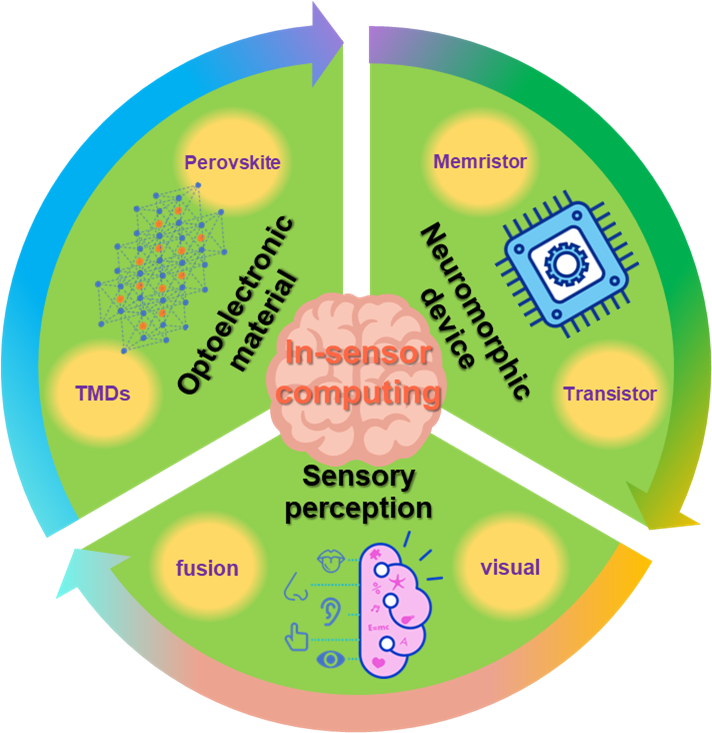On June 14, 2024, Professor Ye Zhou’s Grouppublished a review paper titled "In-sensor neuromorphic computing using perovskites and transition metal dichalcogenides" in JOURNAL OF PHYSICS-MATERIALS (IF 4.9). The review This review paper explores the in-sensor neuromorphic computing using perovskites and and transition metal dichalcogenides. Shen-Yi Li, and Ji-Tuo Li, undergraduate students at Shenzhen University, is the first author, with Prof. Ye Zhou and Dr. Guanglong Ding as the corresponding author, and Shenzhen University as the first completion unit.
With the advancements in Web of Things, Artificial Intelligence, and other emerging technologies, there is an increasing demand for artificial visual systems to perceive and learn about external environments. However, traditional sensing and computing systems are limited by the physical separation of sense, processing, and memory units that results in the challenges such as high energy consumption, large additional hardware costs, and long latency time. Integrating neuromorphic computing functions into the sensing unit is an effective way to overcome these challenges. Therefore, it is extremely important to design neuromorphic devices with sensing ability and the properties of low power consumption and high switching speed for exploring in-sensor computing devices and systems. In this review, we provide an elementary introduction to the structures and properties of two common optoelectronic materials, perovskites and transition metal dichalcogenides (TMDs). Subsequently, we discuss the fundamental concepts of neuromorphic devices, including device structures and working mechanisms. Furthermore, we summarize and extensively discuss the applications of perovskites and TMDs in in-sensor computing. Finally, we propose potential strategies to address challenges and offer a brief outlook on the application of optoelectronic materials in term of in-sensor computing.
This research was supported by the National Natural Science Foundation,Guangdong Natural Science Foundation and the Shenzhen Municipal Science and Technology Innovation Commission.
The original article can be found at:https://iopscience.iop.org/article/10.1088/2515-7639/ad5251#jpmaterad5251f1



